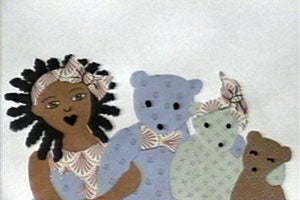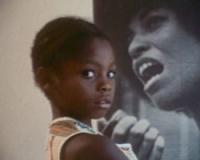After nine weeks of screenings, I was somewhat surprised to see Alile Sharon Larkin’s Dreadlocks and the Three Bears (1991), a charming re-telling of the fairy tale “Goldilocks and the Three Bears.” Where the other films of the series tend to be addressed to adult audiences, Dreadlocks and the Three Bears seems to have a children’s audience in mind.

In an interview conducted for the L.A. Rebellion project, Larkin explains the background to the film: when her son was a child, she found that she just could not bring herself to read “Goldilocks and the Three Bears” to him. Though she does not explain precisely why, the problems of the fairy tale are obvious: a blond-haired girl makes use of the food and comforts of the bears’ home, and flees when they return, fearing their...wrath? Revenge? In any scenario, the bears are perceived as hostile to the lily-white heroine. Larkin re-imagines the heroine as Dreadlocks, a Caribbean girl with skin the color of cinnamon and lovely curly hair who, wandering in the teddy-bear forest, stumbles on the bears’ home. Like Goldilocks she makes herself at home, but feeling regret for eating their food and breaking the Little Bear’s chair, cries herself to sleep. When discovered by the bears, the Little Bear sees her tears, recognizes her regret, and wakes her up—but instead of running away, Dreadlocks apologizes and makes them some delicious food to share.
Larkin’s film, which uses original artwork created by the filmmaker to illustrate the story, confronts the violence of the popular version of the story and the ways that it naturalizes hostility between different groups—a pointed reminder to us to think about what we take to be innocuous or innocent in our culture, like children’s stories, and to consider what understandings about the world and society are being transmitted through their telling. The old stories often need to be re-tooled and re-told to help us understand that children, like adults, are capable of much more than the selfishness and fear that we often find in these traditional stories.
—Karrmen Crey






 Mobile Navigation
Mobile Navigation

